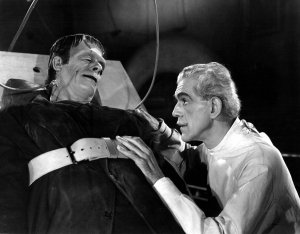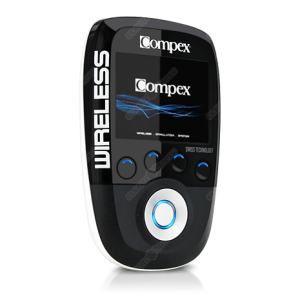I should probably start by acknowledging that there are other muscle stimulation devices available… but I’m not employed by Compex, I just have some very good experiences using their product. This blog was borne out of frustration of seeing Compex machines gathering dust in treatment rooms or being used ineffectively as passive, plinth based modalities. I think a lot of people are missing the trick, you need movement!
While I am an advocate of its use clinically, I want to disclose that using a Compex will not make a bad exercise good. It is a bolt-on to a rehab program and is something that can make a good exercise great. That is key. The clinical reasoning, exercise selection and placement of the stimulation all underpins an effective application, so before rolling it out to all athletes or patients make sure you can reason why it has a place in your practice.
Its all about progress
Like with any intervention, the clinical reasoning behind the application of muscle stimulation can influence its use at different stages of injury and rehabilitation. In the acute stages, it is believed that muscle stimulation may modulate pain. For an interesting read on the use of electricity and pain throughout the centuries, click here. However, as we understand more about optimal loading and mechanotherapy, we probably need to limit the time an athlete sits on the plinth watching the latest Mannequin Challenge on their smart phone while their quad twitches. It is worth considering that a Compex placed on a dead body would still cause it to twitch. The key is to get them moving and use the Compex to either facilitate movement or provide an external load. Interesting that we can use the same machine and the same settings to either regress or progress an exercise… the key is in the exercise selection.
Consider the tissues
Muscle injury: It should be pretty obvious that placing a muscle stimulation device, designed to promote contraction of muscle, on a contractile tissue with a tear or micro-damage could have negative consequences. For a second, lets forget the Compex. Respect the pathology and consider if you really need to lengthen or contract that muscle to load it. Is there a way you can work that tissue as a synergist perhaps? If the hamstring was injured in the sagital plane, can we move through coronal (frontal) planes and still load the hamstring? This could possibly be a slight progression on an isometric exercise and shouldn’t change the length of the muscle that may cause pain or further damage. Certainly more beneficial than sitting on the treatment bed though. So now consider how muscle stim may benefit this stage of injury. It could possibly help with any inhibition due to swelling or pain, perhaps be used to add an increased load to unaffected tissues that you may not be able to load otherwise.
As the healing progresses and the level of activity increases, it is quite common that we see some deficits in muscle function, especially after a long acute phase (if that isn’t a paradox?! Think post surgery or fixation). A good example is post ankle reconstruction, where you have worked on regaining plantar / dorsi flexion but when you ask the athlete to do a heel raise, it’s quite an effort. It may be appropriate to use the Compex here as a little crutch to facilitate movement and contraction. But the key thing here is it is not our cadaver that we causing a contraction in, the athlete is consciously initiating the movement. (Previous blog on internal and external cues here).

Joint Injuries: In comparison to a muscle injury, your application of Compex may be more aggressive. Because you are unlikely to affect a non-contractile tissue with the stimulation, you may use the eccentric reasoning to help reduce atrophy rates following a intracapsular injury like an ACL. Ensure you know the available range first of course.
With these injuries, the external stimulation may help with inhibition, improve proprioception lost by the ligament or capsule or it may provide stability to the joint by increasing the available contraction. Again, there will be a time and a place and it requires the clinician to reason through the application, but this may be a great addition to a program that is becoming stale.
Tendon injuries: The use of the Compex to enhance an isometric contraction or to create an eccentric contraction may be a great addition for an in-season tendinopathy as a way of managing load. The timed contraction allows clinicians to monitor Time Under Tension (TUT) which is essential for tendon management. If considering a High-Medium-Low frequency through the week, a pain free exercise that is used on a Medium day can become a High load exercise with the addition of an externally generated contraction. But consider the two things that aggravate a tendon, compression and shear. Appropriate exercise selection and range is going to be crucial, that being said, it may be that the addition of stimulation to the quads actually reduces shear through the patella tendon by changing the fulcrum of the patella (no research to back this up, just my musings).

I think there are many options out there to enhance rehabilitation by considering the diversity of muscle stimulation. But I want to repeat for the hundredth time, it is the exercise selection that is key. The addition of a Compex will only amplify that choice. For the patient, it adds a bit of variety to a rehabilitation program and for the clinician it is another tool to help with optimal loading of a healing tissue or structure. I am a big fan of weight training (don’t let my chicken legs fool you) but there are injuries or athletes that for one reason or another are unable to tolerate weights. This is one tool in a very large and overused metaphorical tool-box that may bridge that gap between body weight exercises and weighted exercises. I also believe there is great benefit when complimenting this with Blood-Flow Restriction Exercise or Occlusion training… but that’s another blog.
As always, thoughts and opinions are welcome.
Yours in sport,
Sam

[…] Compex doesn’t have to be complex – While I am an advocate of its use clinically, I want to disclose that using a Compex will not make a bad exercise good. It is a bolt-on to a rehab program and is something that can make a … […]
LikeLike